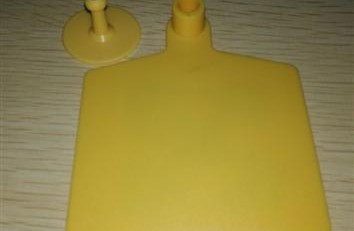What are the types of RFID antennas?
The antennas of the RFID system can be roughly divided into two categories: electronic tag antennas and reader antennas. These two types of antennas can be subdivided into omnidirectional antennas and directional antennas according to the directivity, and can be divided into linear antennas according to the difference in shape. And planar antennas. RFID reader/writer antennas need to have broadband and circular polarization characteristics. In the low frequency and high frequency bands, electronic tags and readers basically use coil antennas, and generally use copper wires. However, due to the high frequency used by the high frequency, the number of turns of the antenna will be much less than that of the low frequency, which makes the production of the high frequency RFID antenna easier and the price lower. In the UHF band, more etching processes are used, including copper etching antennas and aluminum etching antennas, and the processes are relatively mature. In the microwave frequency band, the forms of antennas are more diverse, including symmetrical dipole antennas, microstrip antennas, array antennas, broadband antennas, and so on.
Different frequency bands and different application fields have different requirements for the structure of the electronic tag antenna. In general, antenna design tends to follow the following goals:
(1) The antenna volume should be as small as possible;
(2) The antenna provides the largest possible signal to the chip;
(3) The directivity of the antenna coverage is as large as possible;
(4) The polarization of the antenna matches the interrogation signal of the reader;
(5) The antenna price is as low as possible and so on.
The three main processes of RFID antenna manufacturing
In order to adapt to the different requirements of RFID performance parameters in different application scenarios, various RFID antenna manufacturing processes have emerged. At present, the most commonly used RFID antenna manufacturing processes mainly include three methods: coil winding, etching and printing.
(1) Coil winding method
When using the coil winding method to make an RFID tag antenna, the tag coil must be wound and fixed on a winding tool. The number of turns of the antenna coil is required to be large. The coil can be either a circular ring or a rectangular ring. . This method is generally used for RFID tags with a frequency range of 125 to 134KHz. The shortcomings of using this processing method to make antennas are obvious, which can be summarized as high cost, low production efficiency, and insufficient consistency of processed products.
(2) Etching method
The etching method usually uses copper or aluminum to make antennas. This method is similar to the etching process of flexible printed circuit boards in production process. The etching method can be used in mass production of electronic tags with 13.56MHz and UHF bandwidth. It has the advantages of fine circuit, low resistivity, good weather resistance, and stable signal. However, the disadvantages of this method are also obvious, such as cumbersome production procedures and low productivity.
(3) Printing method
The printed antenna is a circuit in which conductive ink is directly printed on an insulating substrate (or film) to form an antenna. The main printing method has expanded from only using screen printing to offset printing, flexographic printing, gravure printing and other production methods. The printing method is suitable for mass production of 13.56MHz and RFID UHF electronic tags. It is characterized by fast production speed, but due to the large resistance of the circuit formed by conductive ink, its application range is limited to a certain extent. Due to the advancement of printed antenna technology, the cost of RFID tags is effectively reduced, which promotes the popularization of RFID applications.
The future development trend of RFID antenna
(1) Small size
With the development of intelligence requirements and process technology, the size of RFID antennas is still developing in the direction of miniaturization. In low-frequency and high-frequency electronic tags, the size of the antenna is often much larger than the chip. Therefore, the size of the tag is often restricted by the size of the antenna. From the perspective of market demand, the miniaturization of RFID tags also facilitates its entry into more application scenarios.
(2) Mass production
Compared with the traditional process, the conductive ink printed antenna has a lower cost and more efficient production, which is mainly reflected in the low price of the material used in the conductive ink, and the printing equipment used in the screen printing process is also cheaper than the etching equipment. In addition, this printing process is simple and quick to operate, and the entire process flow is relatively simple, making it more suitable for mass production.
(3) Green process
In addition, the chemical corrosion reaction in the etching process will produce waste, which is likely to cause pollution to the environment. In contrast, the conductive ink printing technology is much more environmentally friendly.
(4) Lower cost
If RFID wants to achieve larger scale applications, the cost needs to be further reduced. Because many times people are not out of consideration for RFID technology, but it is difficult to accept the high cost pressure behind electronic tags. Now conductive ink technology can make RFID applications get out of the cost dilemma, greatly reducing the production cost of RFID antennas. It is foreseeable that the combination of RFID antenna production and advanced printing technology will be closer in the future.
With the development of conductive ink and printing technology, RFID printed antenna technology will be further popularized. This will help reduce the cost of RFID tags, thereby lowering the application threshold of RFID, promoting the implementation of RFID technology in all walks of life, and letting the Internet of Everything world come as soon as possible.


